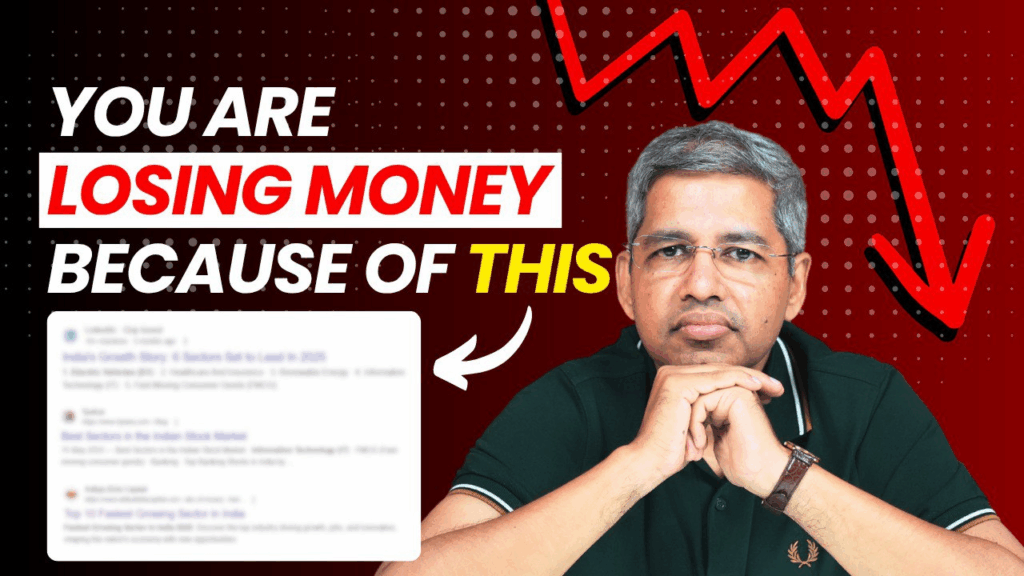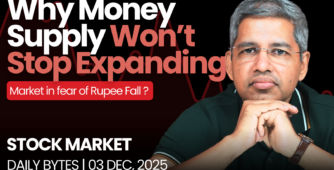Where is the market headed?
Another session where the markets largely went nowhere, echoing the indecisiveness seen over the last two days. As mentioned earlier, there’s a clear sense of lethargy. Intraday declines and weakening advance-decline ratios have been consistent, and today that translated into a broader market dip—though the Nifty itself remained mostly unaffected.
Meanwhile, global developments took a serious turn. The Tel Aviv Stock Exchange was reportedly bombed today, along with some hospitals, highlighting how precarious the situation in the Middle East remains. While it may seem distant—India being neutral, and the conflict framed as Iran vs Israel—it has very real implications. Iran controls the Strait of Hormuz, a vital channel for 20% of global oil trade. If it’s blocked, oil could spike to $100 per barrel.
The second-order impact is even more concerning. As the U.S. ramps up military support for Israel and China and Russia back Iran, a larger geopolitical alignment seems to be forming—almost resembling a proxy world war. Russia appears to be intensifying attacks on Ukraine, and speculation around China’s next move, possibly involving Taiwan, continues to swirl.
What’s remarkable, however, is the market’s muted reaction. Not just in India, but globally, markets are holding up—powered by abundant liquidity. In fact, even the Israeli stock market had been hitting new highs until yesterday. It’s an astonishing show of resilience, or perhaps a sign of disconnect between risk and sentiment.
Market Overview
Nifty remained absolutely flat by the end of the day, closing marginally lower at -0.08%.
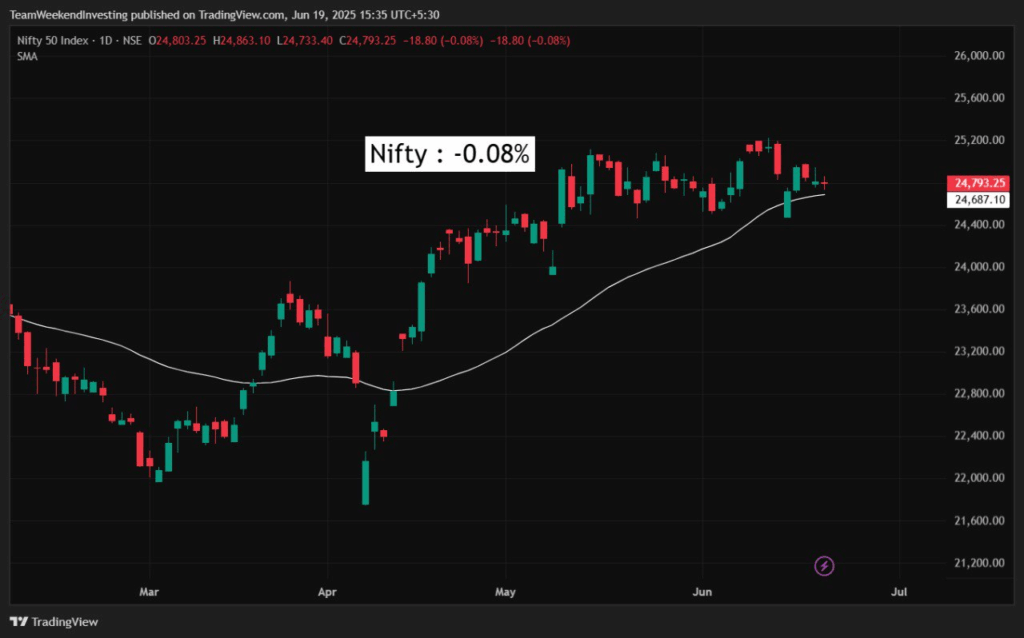
Nifty Next 50
Nifty Junior closed lower by 1.4%
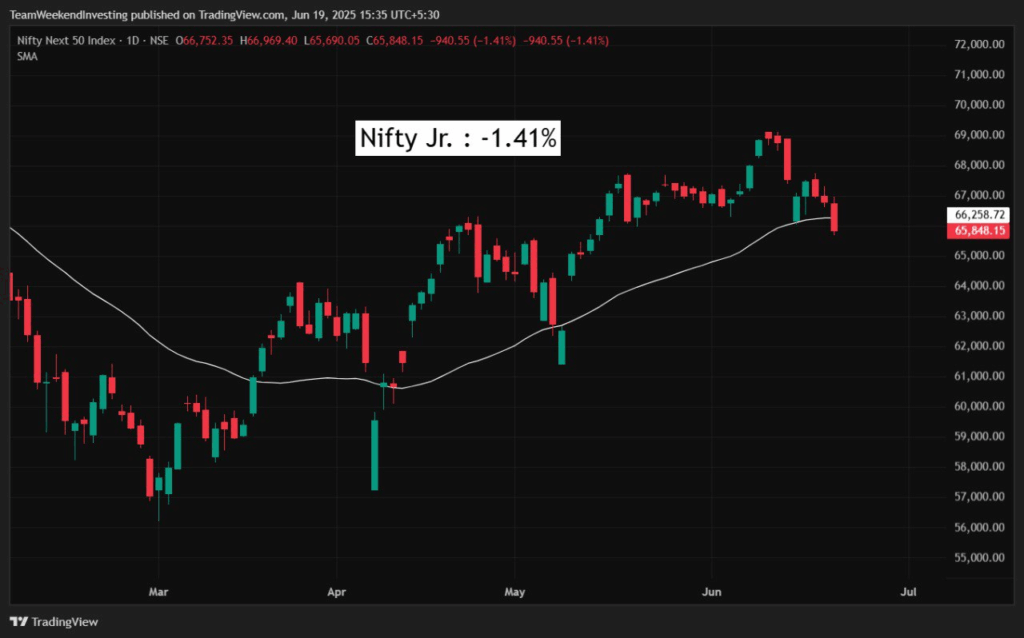
Nifty Mid and Small Cap
MidCaps declined by 1.57%, while SmallCaps saw a sharper fall of 1.93%, indicating broad-based weakness in the market.
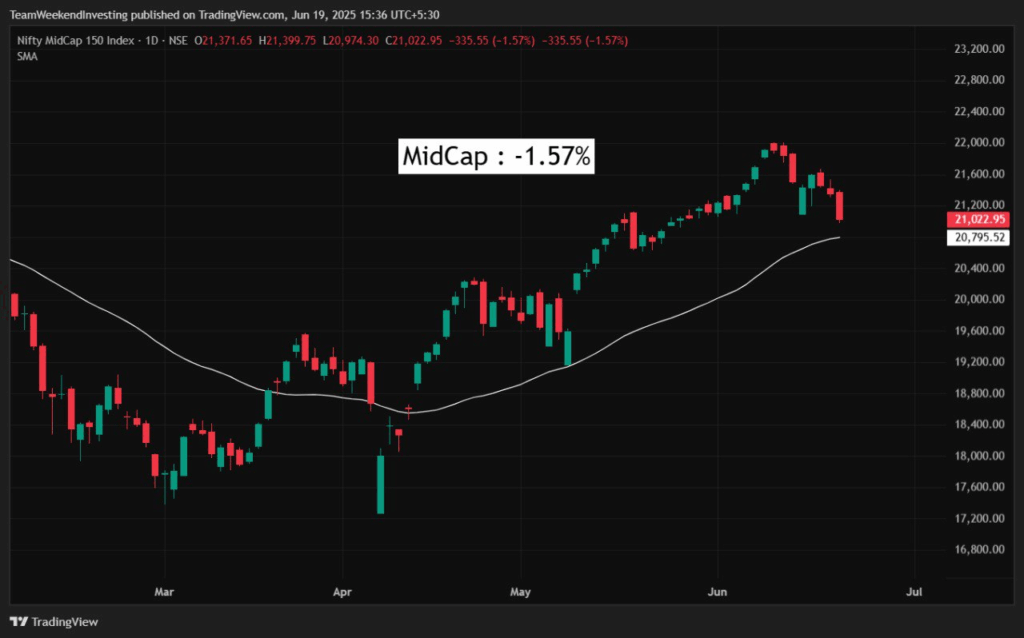
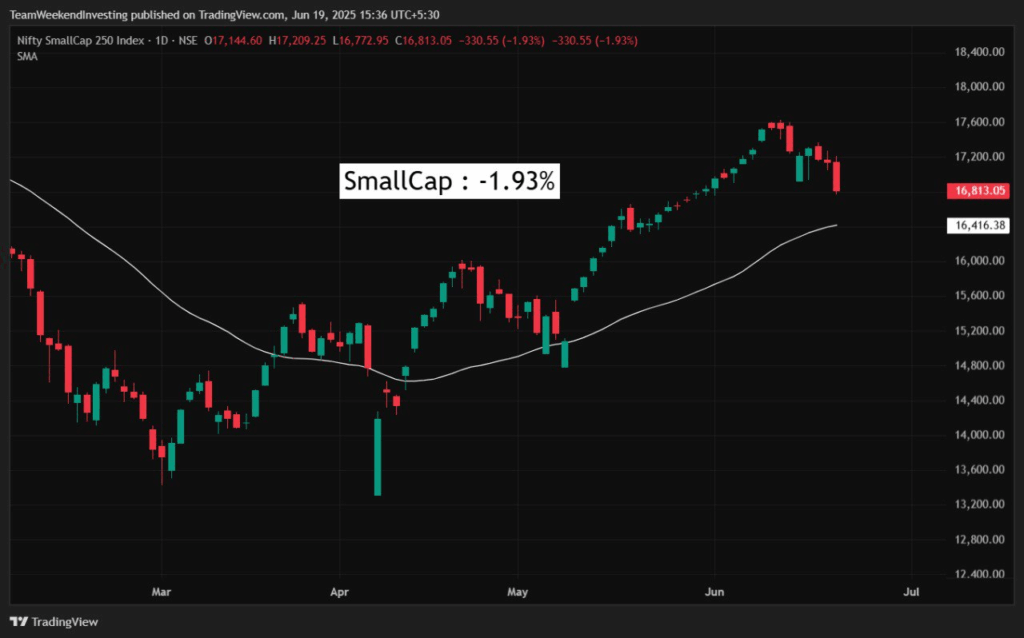
Bank Nifty
Bank Nifty was relatively stable, closing with a modest decline of 0.45%, holding up better than the broader market.
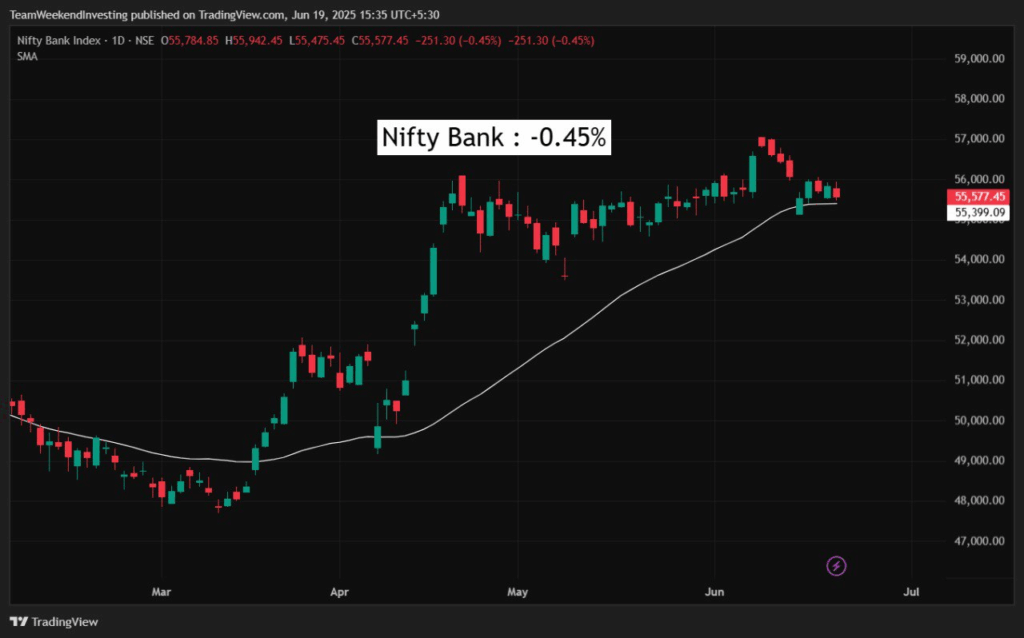
GOLD
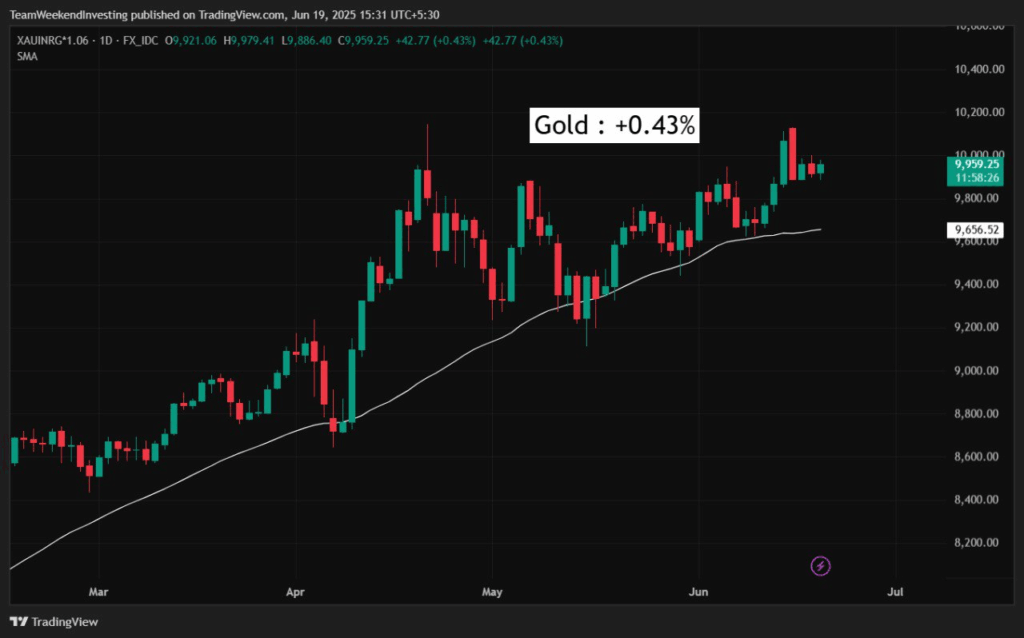
Advance Decline Ratio
In the advance-decline trends, the picture remained weak throughout the day. Declines continued to climb steadily, while advances kept falling—a clear indication of broad market weakness. By the end, advances stood at just 60, whereas declines surged sharply to 441.
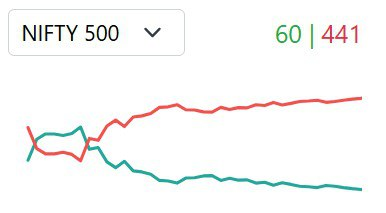
Heat Maps
The Nifty large-cap heat map was largely painted red today, reflecting widespread weakness. Key losers included State Bank of India, Bajaj Finance, TCS, Infosys, Coal India, Adani Ports, and Adani Enterprises. On the flip side, Mahindra & Mahindra, Wipro, Bharti Airtel, and Tata Consumers showed some relative strength.
In the Nifty Next 50 space, the decline was more pronounced. Stocks like Vedanta, Varun Beverages, Adani Power, Adani Green, Gas Authority, JSW Energy, Canara Bank, Chola Finance, ABB, and CG Power saw steep cuts. Most Adani Group stocks were sharply down. One exception was Swiggy, which rose 2.39%, continuing its recent uptrend.
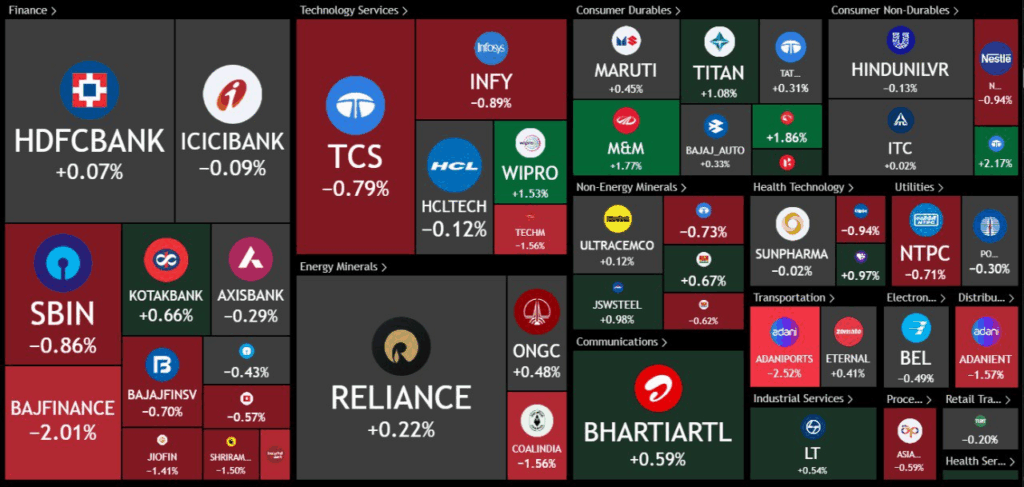

Sectoral Overview
From a sectoral perspective, Nifty Auto stood out as the only meaningful gainer, with a 0.5% rise. The India Consumption Index also managed to hold in the green. However, all other sectors closed in the red. Notable laggards included PSU Banks (-2%), Media (-1.9%), Capital Markets (-1.8%), Real Estate (-1.6%), and Defence (-1.5%).

Sector of the Day
Nifty PSU Bank Index
The PSU banking space continued to face selling pressure, with notable losses in Central Bank, UCO Bank, Bank of India, IOB, and Punjab & Sind Bank.
This marks seven to eight consecutive sessions without any meaningful upward move in the segment. While it’s possible that this could be a consolidation phase before a potential turnaround, the sector is currently trading below its moving average, suggesting that further weakness could be in store unless strong support emerges soon.
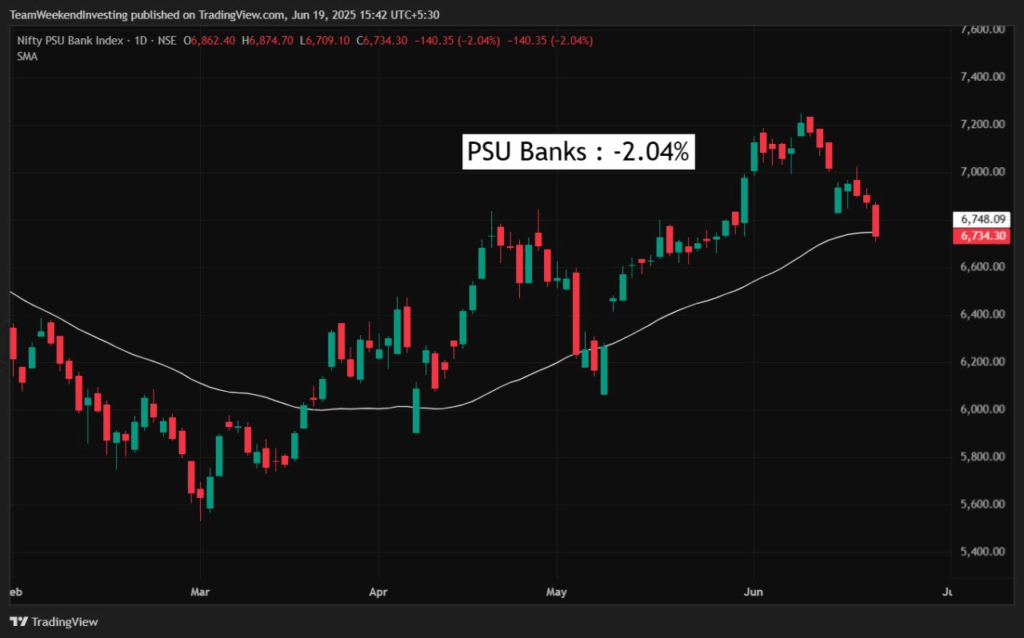
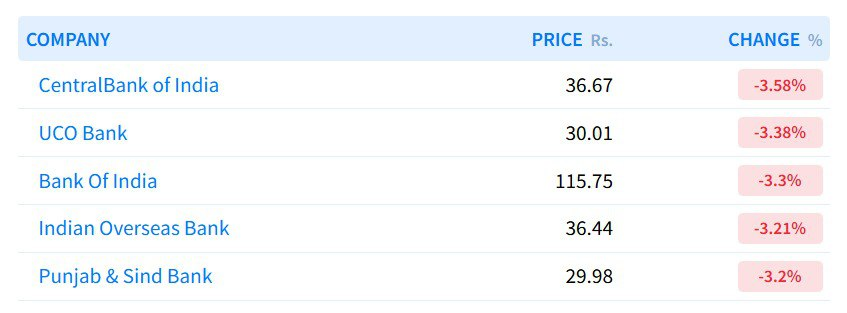
Story of the Day: The Performance Trap: Why Retail Investors Keep Losing Money
Why do so many retail investors end up losing money—or missing out on big opportunities? While the last five years may look fine for some, if you zoom out to any five-year period across the past few decades, the trend becomes clear: a large number of investors either lose capital or suffer significant opportunity cost.
One major reason is the tendency to invest based on recent past performance. Investors often get drawn into sectors or funds that have performed well in the last three or five years. Mutual fund distributors and bank RMs highlight stellar historical CAGR figures to sell products. But after the sale, the story ends. There is usually no follow-up when performance drops. The decision-making process is reactive, driven by what has done well recently, rather than by forward-looking strategy.
Media coverage and trending narratives also play a big role. Stocks and sectors often receive attention only once they’re already near their peak. This creates urgency—investors fear missing out and jump in at inflated prices. The cycle of buying high and selling low continues. To make things worse, prediction has become a cultural obsession. Everyone wants to forecast the next hot theme or winning stock, but the reality is far more random than most are willing to admit.
Sectoral studies reveal how misleading this behaviour can be. Data shows that the best-performing sectors in one five-year window almost never top the charts in the next. Between 2009 and 2013, autos, IT, and FMCG led the market. But from 2014 to 2018, they underperformed. In 2015, pharma and FMCG were the stars. The next five years? Pharma dropped to the bottom, and FMCG delivered just 8.4%.
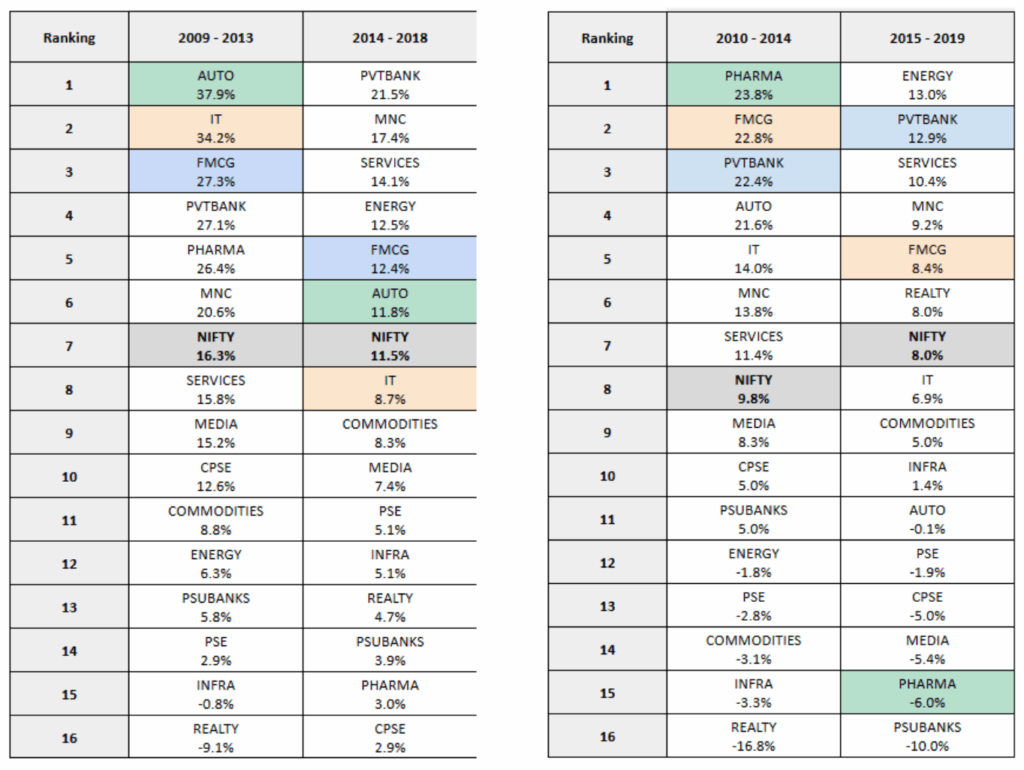
This pattern has repeated year after year, with the top-ranked sectors falling in the next cycle while previously ignored ones—like real estate or PSU enterprises—emerged as leaders.
The same goes for mutual funds. A study by FundsIndia (see the image below) tracked the top 30 performing funds each year and their returns over the following three years.
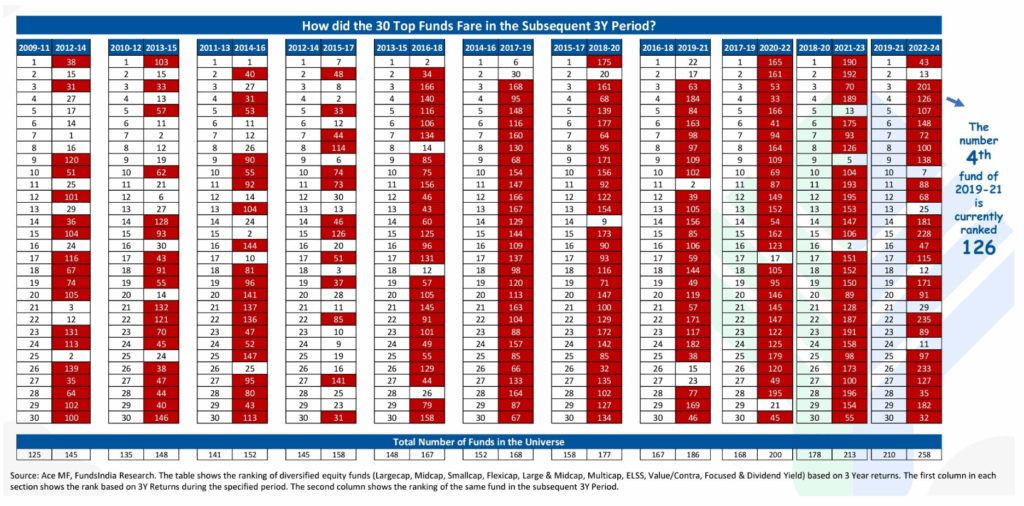
Time and again, funds ranked in the top 5 fell dramatically in the next cycle. One fund that ranked 4th in 2019–2021 dropped to 126th three years later. Even Peter Lynch’s legendary Magellan Fund, with a long-term CAGR of over 28%, failed to make money for the average investor—because people jumped in at the top and exited at the bottom.
Ultimately, the issue isn’t just fund performance; it’s investor behaviour. Most losses happen because investors chase returns, make emotionally driven decisions, and lack a structured plan for entry and exit. Without a rules-based approach, they’re more likely to panic during downturns or get greedy during bull runs—both of which erode long-term returns.
The key takeaway is this: past performance should never be the only reason to buy into a fund or sector. It may signal consistency when combined with a sound framework, but by itself, it’s no guarantee of future success. If you’ve already built your portfolio based on past returns, ensure that you have clear rules for exiting and managing underperformance. That discipline makes all the difference.
Before chasing the next trending sector or fund, ask yourself—do you have a strategy to manage risk, or are you just reacting to what worked yesterday? In investing, what matters most isn’t just what you buy—but how and when you choose to sell.
Let us know in the comments—have you ever been caught in this trap of chasing past performance?

